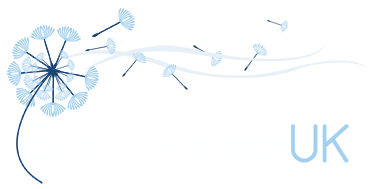SARCOIDOSIS AND THE JOINTS, MUSCLES, AND BONES
Sarcoidosis may affect many parts of the body including the joints, muscles and bones. Approximately 1 in 5 patients with sarcoidosis have these musculoskeletal symptoms. This contains more information on the symptoms, tests and treatment for sarcoidosis affecting the joints, muscles and bones.
![]() The information on this page has been compiled with the help of sarcoidosis specialists Dr K. Bechman and Dr J. Galloway, Rheumatology, Kings College Hospital, London.
The information on this page has been compiled with the help of sarcoidosis specialists Dr K. Bechman and Dr J. Galloway, Rheumatology, Kings College Hospital, London.
Bones
Sarcoidosis can affect the bones in two ways: directly through inflammation in the bone and indirectly through the treatments taken to relieve the symptoms of sarcoidosis.
Symptoms Most people with sarcoidosis in the bone do not experience symptoms. Any changes in the bones due to the condition are instead picked up on imaging scans. Your physician will often want to do more tests – these changes may also be caused by other conditions and it is important to find out if they are due to sarcoidosis.
It may not be necessary to alter your treatment for sarcoidosis if your bones are affected, particularly if they are not causing you any symptoms. However sometimes your physician may recommend immune medication similar to the treatment for joint or muscle disease.
Treatment side effects Patients with sarcoidosis are often treated with corticosteroid (prednisolone) therapy. This can cause softening of the bones (osteoporosis). Thin bones do not cause symptoms but do leave the bones weakened, more fragile and prone to breaking.
Download the Leaflet:
Investigations Patients on long term steroid therapy may be screened for osteoporosis using a bone density scan (‘DEXA’ scan). This measures how strong your bones are and can help to guide treatment. Your physician may also measure calcium and vitamin D levels. The levels of these may be affected by sarcoidosis and are important for healthy bones.
Treatment There are a number of treatments to help strengthen the bone and prevent fractures. The most commonly prescribed drug is once weekly Alendronic acid. This is sometimes prescribed with calcium and/or vitamin D supplements.
As people with sarcoidosis can be prone to having a high calcium level, is it important that your your calcium and vitamin D levels are measured before taking any supplements. These levels will then be regularly monitored with blood tests. Refer to the SarcoidosisUK website for further advice.
Advice
Maintain healthy bones by:
- being physically active
- consuming enough calcium (dairy products, fruit and vegetables)
- getting enough Vitamin D (sunlight)
Joints
Chronic joint pain affects less than 1% of all patients with sarcoidosis. It is important that your physician knows about your joint symptoms as you may benefit from changes in treatment or physiotherapy.
Symptoms Any joint can be affected by sarcoidosis but the main joints affected are the feet, ankles and knees. Symptoms commonly include:
- pain
- stiffness and rigidity
- swelling, sometime with red colouring
Investigations Joint pain is diagnosed via consultation with your doctor. Occasionally, further investigations are required. This may include X-rays of your joints or other imaging scans (ultrasound or MRI). Your physician may take a sample of fluid from your swollen joint using a needle and syringe (biopsy).
Treatment There are a number of treatments that can reduce the symptoms in your joints. These may include non-steroidal anti-inflammatory drugs (NSAIDs), corticosteroids (prednisolone) or other immune medications such as Methotrexate.
Advice Inflamed joints can be painful and can restrict daily movement. Despite this, try to keep moving and exercise daily. Exercise can help reduce stiffness felt around the joints. If you experience moderate to severe joint pain as a result of the exercise, stop immediately and consult your doctor.
‘Lӧfgren’s Syndrome’
Some patients may develop sudden onset pain and swelling in the joints, most often at the ankles. At the same time, they may develop painful red or purple bumps at the shins. These skin changes are called ‘erythema nodosum’. When these symptoms occur together, your physician may arrange a chest X-ray to look for enlarged lymph glands in the chest.
These lymph glands usually do not cause any symptoms. The combination of these joint symptoms, the skins changes (erythema nodosum) and enlarged lymph glands in the chest on X-ray is called ‘Lӧfgren’s syndrome’. This is a seasonal condition that most often occurs in spring and autumn as the temperature changes.
Treatment. ‘Lӧfgren’s Syndrome’ often resolves by itself, without the need for specific medication. Sometimes non-steroidal anti-inflammatory (NSAIDs) drugs or corticosteroids (prednisolone) are given for a short period to help ease your symptoms.
Muscles
Muscle involvement in sarcoidosis is relatively uncommon. Some people may develop lumps in their muscles which can be painful. In other cases muscle involvement is less specific and may cause the muscles to feel generally weaker. It is important to tell your physician if these symptoms develop.
Investigation This might include scans of the muscle (MRI scan or CT PET scan), electrical tests of the muscles or taking a muscle sample (biopsy). Muscle biopsies are simple procedures to perform and can be done under local anaesthetic.
Treatment When the muscles are affected in sarcoidosis, treatment is usually a combination of corticosteroids (prednisolone) in addition to other immune medications (e.g. Azathioprine or Methotrexate).
Watch a Sarcoidosis and Joints, Muscles and Bones with Dr James Galloway
Page last updated: October 2022.
Related content from SarcoidosisUK:
Sarcoidosis and Fatigue
Do you experience fatigue? Find symptoms, treatment and more information about sarcoidosis and fatigue.
Consultant Directory
Do you want to find a consultant? Use our directory to find a sarcoidosis specialist or clinic near you.
SarcoidosisUK Support
How can we support you? Find more information on our Nurse Helpline, Support Groups and Online Support.

